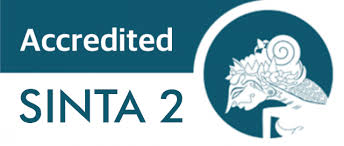Interpretation of Farid Esack's Hermeneutics as a Value of Social Movement Transformation
DOI:
https://doi.org/10.29240/alquds.v9i1.9581Keywords:
Hermeneutics;, Farid Esack; , Apartheid;, Social MovementAbstract
The slogan apartheid by the National Party that governs black life in South Africa caused turmoil and harsh criticism both inside and outside Africa. The establishment of The Call of Islam organization in 1984, initiated by Esack with the idea of liberation derived from his hermeneutic concept, was one of the forms of resistance. This study discusses the idea of Esack's hermeneutics in-depth and presents a form of Qur'an reading with Esack's hermeneutics in strengthening social movements. This paper uses a qualitative approach with a library research model. Primary data are taken from books by Esack related to hermeneutics and social movements. At the same time, secondary data is in the form of articles and writings related to his thoughts and social movements. The results showed that Esack's hermeneutics combined Arkoun's regression-progressive model and Fazlurrahman's double movement. Esack's hermeneutics has six interrelated interpretation keys and aims to liberate the oppressed from the ruler's tyranny. The six keys in question are Taqwa, Tawhid, Al-Nas, Al-Mustadh'afun fi Al-Ardh, Al-Adl, Al-Qisth, and Jihad. Social movements inspired by Esack's hermeneutics include the Muslim Student Association (MSA), Muslim Youth Movement (MYM), Qiblah, and The Call of Islam. The forms of resistance are anti-apartheid (jihad and shahada), racism jihad (against racism), socio-economic jihad (for development, reconstruction, and against poverty), and gender jihad.
Downloads
References
Abidin, Ahmad Zainal. “Epistemologi Tafsir Al-Quran Farid Esack.” Jurnal Theologia 24, no. 1 (2013): 5–36.
Aflahasoleh, Alfi. “Penafsiran Ayat-Ayat Al-Qur’an Tentang Anak Yatim Dengan Pendekatan Hermeneutika Pembebasan Farid Esack.” IAIN Syekh Nurjati Cirebon S1 IAT, 2023.
Ahmad, Miladu Ahadi, and Umi Sumbulah. “Khaled Abou El Fadl’s Perspective on Hadith Hermeneutics.” Religia: Jurnal Ilmu-Ilmu KeIslaman 24, no. 2 (2021): 157–74.
Akhmad Ali Said. “Hermeneutika Al-Qur’an Tentang Pluralisme Agama Perspektif Farid Esack.” Jurnal Ilmiah Spiritualis: Jurnal Pemikiran Islam Dan Tasawuf 6, no. 1 (August 26, 2020): 1–26. https://doi.org/10.53429/spiritualis.v6i1.74.
Arkoun, Mohammed. “Rethinking Islam Today.” The Annals of the American Academy of Political and Social Science 588, no. 1 (2003): 18–39.
Asnawan. “Hermeneutika Pembebasan Farid Esack.” Jurnal Filsafat Indonesia, 2023.
Asnawan, and Oqik Suherlan. “Hermeneutika Pembebasan Farid Esack.” Jurnal Filsafat Indonesia 6, no. 2 (June 30, 2023): 258–67. https://doi.org/10.23887/jfi.v6i2.57647.
Esack, Farid. “Qur’anic Hermeneutics: Problems and Prospects.” The Muslim World 83, no. 2 (1993): 118–41.
Downloads
Published
How to Cite
Issue
Section
Citation Check
License
Copyright (c) 2025 Syarifaturrahmatullah Syarifaturrahmatullah

This work is licensed under a Creative Commons Attribution-NonCommercial-ShareAlike 4.0 International License.
Authors who publish with AL QUDS : Jurnal Studi Alquran dan Hadis agree to the following terms:- Authors retain copyright and grant the journal right of first publication with the work simultaneously licensed under a Creative Commons Attribution-NonCommercial-ShareAlike 4.0 International License (CC BY-NC-SA 4.0) that allows others to share the work with an acknowledgment of the work's authorship and initial publication in this journal.
- Authors are able to enter into separate, additional contractual arrangements for the non-exclusive distribution of the journal's published version of the work (e.g., post it to an institutional repository or publish it in a book), with an acknowledgment of its initial publication in this journal.
- Authors are permitted and encouraged to post their work online (e.g., in institutional repositories or on their website) prior to and during the submission process, as it can lead to productive exchanges, as well as earlier and greater citation of published work (See The Effect of Open Access).









